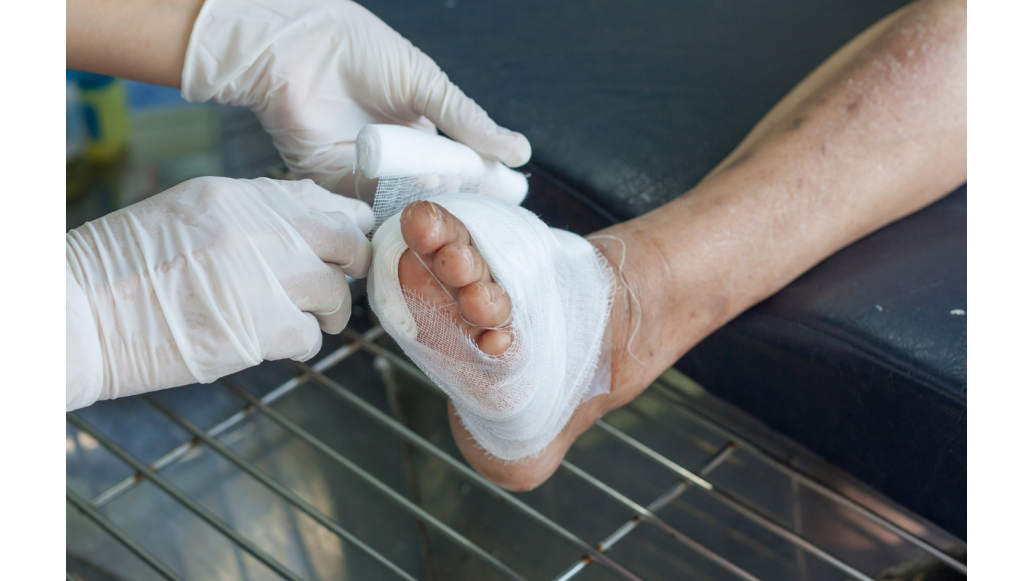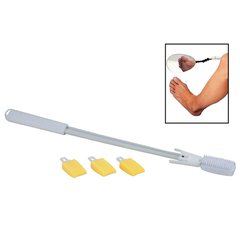Diabetes is a serious, chronic condition that affects millions of Americans, including a significant number of U.S. Veterans. Whether diagnosed with Type 1 or Type 2 diabetes, individuals face a variety of health challenges—including a wide range that directly affect feet.
Understanding the symptoms, risks, and proper foot care routines is essential to managing the disease and preventing complications like ulcers, infections, and even limb loss. This guide explores the types of diabetes, common symptoms, the heightened risk among Veterans, and practical tools and tips to help protect their health.
Understanding Diabetes
The Mayo Clinic defines diabetes mellitus as a group of diseases that affect the way in which the body uses glucose. Glucose, or blood sugar, is the brain’s main source of fuel as well as a primary source of energy for the cells that make up the muscles and tissues of the body.
Type-1 diabetes, also known as juvenile, typically develops during childhood, but can appear during adulthood. Causes can be genetic or are sometimes related to viruses.
Type-2 diabetes more often occurs during adulthood but can sometimes develop at a young age, often due to obesity. Though neither type of diabetes has a cure, losing weight, eating well, and exercising can help manage the disease.
Symptoms of both types can include the following:
- Increased Thirst and Frequent Urination
- Excessive Hunger
- Unexplained Weight Loss
- Blurred Vision
- Slow-Healing Sores
- Numbness or Tingling in Extremities
- Fatigue
- Dry, Itchy Skin
- Increased Infections
- Nausea and Vomiting
Diabetes Among Veterans
According to the VA, which is at the forefront of diabetes research, nearly 25% of Veterans who receive VA care have diabetes. That’s nearly double the rate found among the general population.
According to their research, the higher risk of Type-2 diabetes among veterans can be attributed to service-related joint damage, chronic pain, and exposure to chemicals such as Agent Orange. Many veterans with diabetes suffer blindness, end-stage kidney disease, and even amputation.
Diabetes’ Effect on Feet and Ways to Mitigate Symptoms
Diabetes often affects feet through loss of sensitivity, according to the American Diabetes Association. This can cause cuts, scrapes, and other small injuries to go unnoticed and unaddressed, which can lead to more serious issues and infections.
Other foot related issues include the following:
- Poor Circulation
- Skin Changes
- Calluses
- Foot Ulcers
- Nerve Damage
- Limb Loss
There are care routines and products that can assist in effectively managing foot related diabetes symptoms:
- Diabetic socks can assist in managing ulcers and other irritations to sensitive feet
- Using a daily moisturizer can keep feet healthy
- Using braces or crutches if you have a foot ulcer can promote healing while reducing pressure and irritation
- Avoiding walking barefoot, even in your home, can reduce the risk of injury
- Using orthotics can reduce pressure on your feet and reduce the occurrence of skin lesions and the potential for infection/ulceration
- Examining your feet every day to look for blisters, cracks, and other signs of injury can help keep ahead of any issues that may arise
Our top product recommendations for diabetic foot care:
Medical Disclaimer: The information provided on this site, including text, graphics, images, and other material are for informational purposes only and are not intended to substitute for professional medical advice, diagnosis, or treatment. Always seek the advice of your physician or other healthcare professional with any questions or concerns you may have regarding your condition.
References
-
Department of Veterans Affairs. (2023, November 15). VA improves diabetes care with patient-generated health data. VA News. https://news.va.gov/138644/va-diabetes-care-with-patient-generated-data/
-
American Diabetes Association. (n.d.). Diabetes and your feet. https://diabetes.org/diabetes-and-your-feet
-
Mayo Clinic. (2023, October 5). Diabetes mellitus. https://www.mayoclinic.org/diseases-conditions/diabetes/symptoms-causes/syc-20371444
-
Mayo Clinic. (2023, October 5). Type 1 diabetes. https://www.mayoclinic.org/diseases-conditions/type-1-diabetes/symptoms-causes/syc-20353011
-
Mayo Clinic. (2023, October 5). Type 2 diabetes. https://www.mayoclinic.org/diseases-conditions/type-2-diabetes/symptoms-causes/syc-20351193








 France
France Australia
Australia
















